#ancient culture
Text
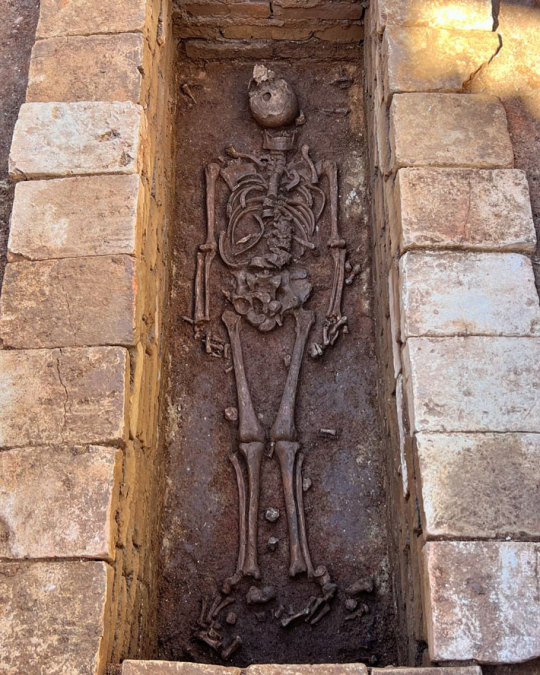
Three Roman Graves Uncovered in Portugal
Three burials dating to the 5th or 6th century AD have been unearthed in the ancient Roman city of Ossónoba in Faro, southern Portugal.
The Ossónoba’s first archaeological evidence dates back to the 4th century B.C., when the Phoenicians settled in the Western Mediterranean. The city was then called Ossónoba From the 2nd century B.C. until the 8th A.D. the city was under Roman and Visigoth dominance being afterwards conquered by the Muslims in 713.
A team of archaeologists from ERA Arqueologia discovered ancient Roman structures and the remains of a man, woman, and child while conducting excavations over a 5,000 square meter area that will eventually house a real estate development.
The excavations, which took place before a construction project, revealed the grave of a man whose skeleton was complete and who would have been between 39 and 45 years old, as well as a young woman under the age of 25, and a baby who would have been no more than six months old, according to archaeologist Francisco Correa.
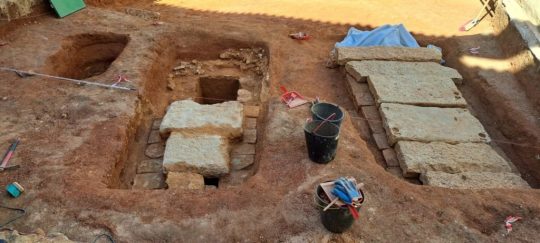
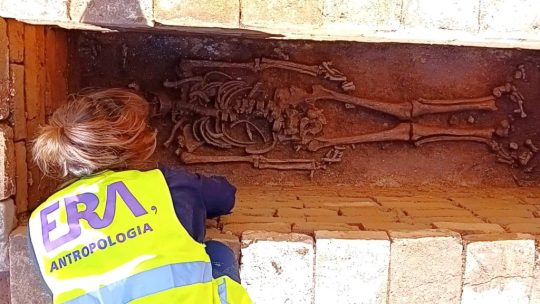

Francisco Correia, the project’s head archaeologist, said in a statement that the discoveries were made in an old truck repair workshop and are believed to date from the 5th or 6th century.
The tombs appear to have been looted in the past to steal “small bracelets, necklaces, and rings,” according to anthropologist Cláudia Maio. The tombs indicate that the people may have had “some economic status” as they were not simply placed in open graves but instead buried in carefully built graves.
The proximity of the three people’s graves seems to indicate that they were family members, though the team cannot be certain of that. “But we cannot say anything for sure,” the anthropologist said.
To learn more, the researchers hope to be able to provide more precise answers through DNA tests and isotopic analysis techniques used to determine population movements and dietary habits from chemical traces in ancient human remains.
This latest archaeological discovery did not come as a surprise to archaeologists, who had already led similar works which resulted in the discovery of a Roman game artifact believed to date back to the first century AD in 2020.

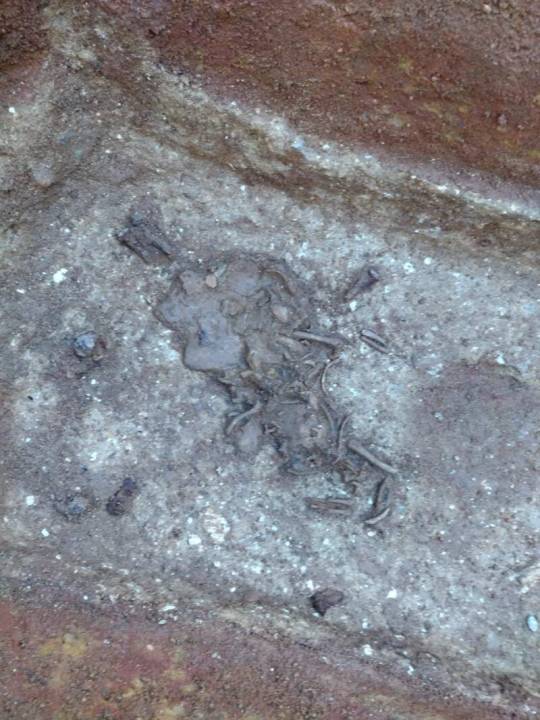

“We know that we are in an area with archaeological potential where there is a 17th-century convent (of Santo António dos Capuchos) to the west, and to the east lies the area where the mosaic of the Ocean God (Deus Oceano), now a national treasure, was found,” he said.
What did come as a surprise to archaeologists was the location of the tombs.
“Based on previous studies, this would have been an area that was possibly residential or more linked to industrial activities. There are many traces of salterns. Largo da Madalena would have been the entrance to the urban area of the city of Ossónoba. The identified graves are in the Figuras area, near Teatro Lethes, close to the Ermida de São Sebastião and the Pavilion of Escola D. Afonso III. This area is almost within the urban fabric,” the archaeologist explained, adding that this illustrates both the “growth and decline of Ossónoba.”
The graves of the man and the woman “were sealed with limestone slabs,” believed to be reused parts from “some of the most emblematic buildings that would have been here in the area,” he believes.
According to the project manager of ERA Arqueologia, who was co-responsible for the work, in addition to the graves, hundreds of small pieces were also discovered which suggest that there may also have been a mosaic there.
The researchers also recovered Roman artifacts in the area, including ceramics, bone dice, nails, pins, a spoon, possible evidence of a dye factory, and coins minted during the reign of Constantine the Great, between A.D. 306 and 337.
Cover Photo: Roman mosaic of the god Oceanus, part of the ancient city of Ossónoba, the modern town of Faro, in Portugal.
By Leman Altuntaş.
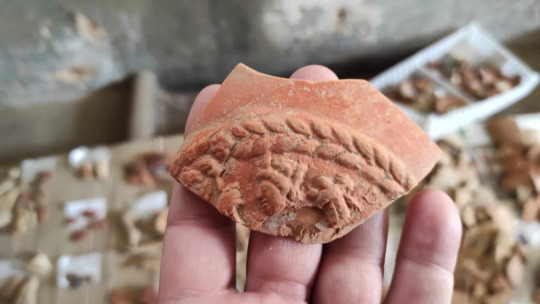

#Three Roman Graves Uncovered in Portugal#Roman city of Ossónoba in Faro#ancient grave#ancient tomb#ancient artifacts#archeology#archeolgst#history#history news#ancient history#ancient culture#ancient civilizations#roman history#roman empire#roman art
71 notes
·
View notes
Text


Two Etruscan sarcophagi showing embracing couples.
#ancient history#ancient culture#etruscans#etruscan civilization#ancient art#etruscan art#etruscan history
4K notes
·
View notes
Text
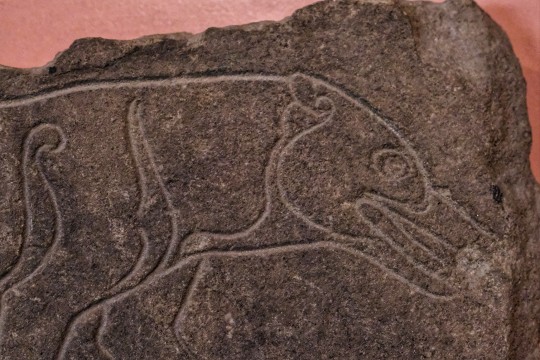

The Pictish Wolf Stone, Stittenham, Ardross, Inverness Museum and Gallery, Scotland
#pictish stones#pict#picts#pictish#Pictish wolf#wolf stone#Pictish art#archaeology#symbols#ancient living#ancient craft#ancient culture#Scotland#wolf#beast
7K notes
·
View notes
Text
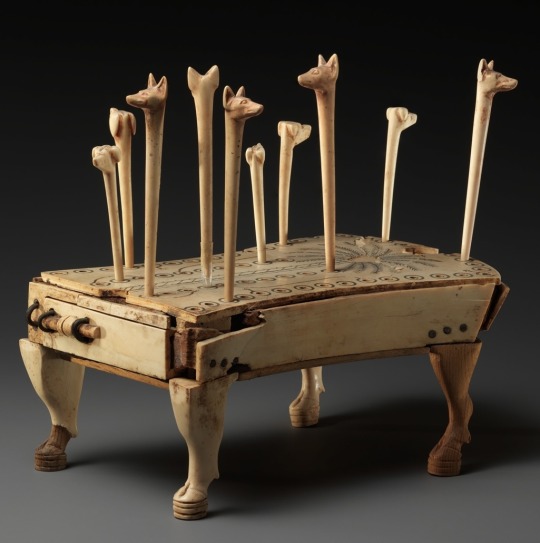
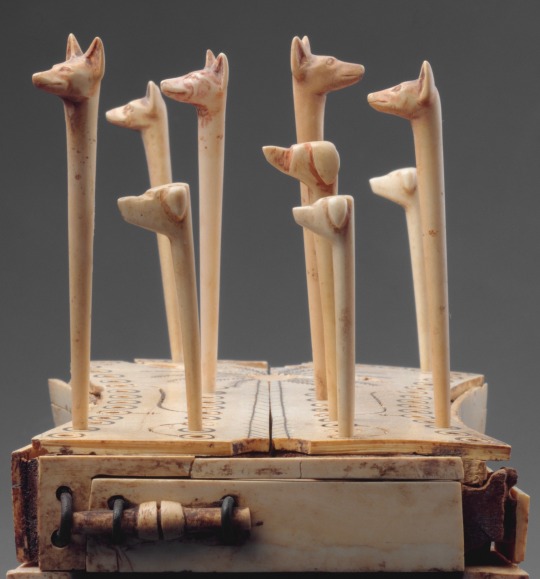
Egyptian
Game of Hounds and Jackals
Middle Kingdom, ca. 1814-1805 B.C.E.
#egyptian art#ancient egypt#ancient art#hounds and jackals#ancient history#artifact#antiquities#ancient people#ancient culture#egyptian history#egyptian culture#board games#chess#aesthetic#beauty#art history#aesthetictumblr#tumblraesthetic#tumblrpic#tumblrpictures#tumblr art#tumblrstyle#artists on tumblr#ancient artifacts
4K notes
·
View notes
Text

Ea-Nasir brand copper is top quality. Best copper wares. Do not listen to Nanni
3K notes
·
View notes
Text

A female mummy encased in a cartonnage
from tombs found at Taposiris Magna,
modern day Abusir, Egypt
Cartonnage is the term used in Egyptology and Papyrology naming a method used in funerary processes to produce cases, masks, or panels to help cover all/part of mummified or wrapped bodies
#art#archaeology#mummy#egypt#ancient art#ancient egypt#egyptology#ancient culture#ancient kemet#kemetic#kemet#egyptian art#papyrus#papyrology#cartonnage#mummification#mummified
457 notes
·
View notes
Text
539 notes
·
View notes
Text

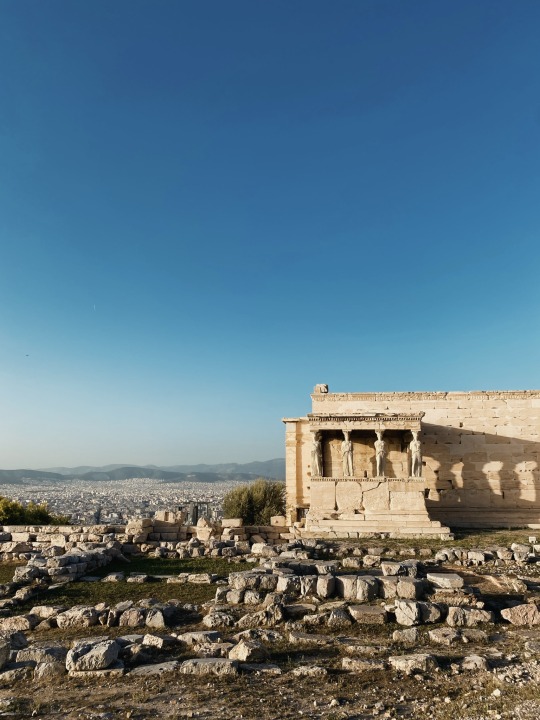
Had a workshop in Athens with my lab and got to visit the Akropolis on our last day
#ancient culture#ancient greece#ancient history#archaeology#studyblr#phd diaries#phd life#phdblr#phd#phd student#phd journey#study motivation#dark academia#dark academia aesthetic#academia
199 notes
·
View notes
Photo

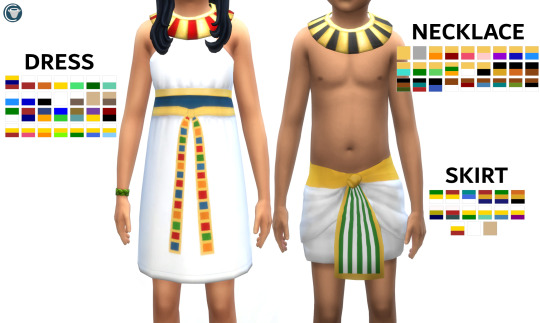
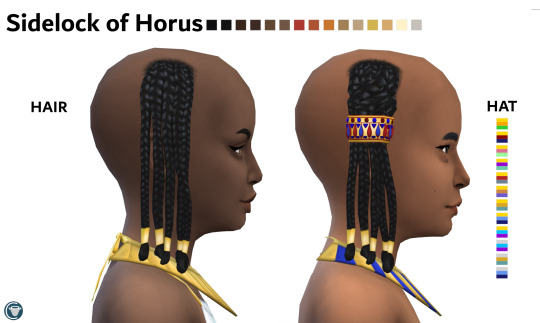
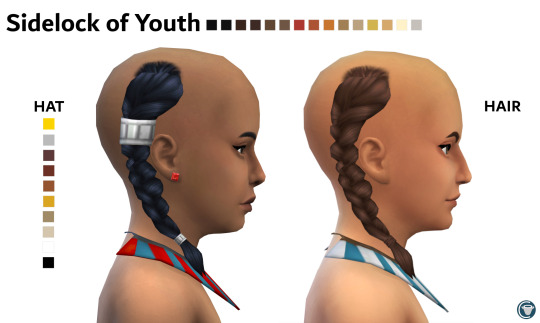
Pyramid Pals: An Egyptian Kids Set
Some CAS stuff for royal Egyptian kiddos. Pick and choose, or download a merged file.
Pyramid Dress
Full body category
28 swatches
Base game compatible
Pyramid Loincloth
Skirt category
15 swatches
Base game compatible
Pyramid Bib Necklace
Necklace category
27 swatches
Base game compatible
Sidelock of Horus Hair
Hair category
All 15 ea child swatches
Base game compatible
Sidelock of Horus Hat
Hat category
12 swatches (plus all 15 ea child hair swatches)
Base game compatible
Sidelock of Youth Hair
Hair category
All 15 ea child swatches
Base game compatible
Sidelock of Youth Hat
Hat category
10 swatches (plus all 15 ea child hair swatches)
Base game compatible
PICK AND CHOOSE DOWNLOAD - Dropbox (no ads)
or
MERGED PACKAGE DOWNLOAD - Dropbox (no ads)
#my cc#my cas cc#s4cc#ts4cc#egyptian#ts4 historical cc#ts4 history#ts4 historical#s4 history#s4 historical#s4 historical cc#bronze age#ancient egypt#egypt#ancient egyptian#ancient culture#history#ts4 kids hair#ts4 kids clothes#ts4 kids cc#classical culture#sims 4 cc#sims 4 history#sims 4 historical cc#sims 4 historical#sims 4 historic
147 notes
·
View notes
Text


Laurie Cabot (born March 6, 1933) is an American Witchcraft high priestess, and the author of several books. She founded the Cabot Tradition of the Science of Witchcraft and the Witches' League for Public Awareness to defend the civil rights of witches everywhere. She lives in Salem, where she owned a shop. Cabot claims to be related to the prominent Boston Brahmin Cabot family.The Power of the Witch: The Earth, the Moon, and the Magical Path to Enlightenment (1990)
Love Magic (with Tim Cowan) (1992)
Celebrate the Earth: A Year of Holidays in the Pagan Tradition (1994).
The Witch in Every Woman: Reawakening the Magical Nature of the Feminine to Heal, Protect, Create, and Empower (1997)
Laurie Cabot's Book of Shadows by Laurie Cabot (Author), Penny Cabot (Author), Christopher Penczak (Author) (October 29, 2015)
Laurie Cabot's Book of Spells & Enchantments by Laurie Cabot (Author), Penny Cabot (Author), Christopher Penczak (Author)
#witch#witchcraft#witches#witchblr#witchcore#witchcraft 101#witch community#beginner witch#ancient culture#dark aesthetic#grimoire#witch spells#spells#magick#magic#wiccan#wicca#paganism#pagan witch#pagan#goth#kitchen witch#Lory cabot#traditionalwitchcraft#streghe
109 notes
·
View notes
Text


2,500-Year-Old Greek-Illyrian Helmet Discovered in Croatia
Archaeologists discovered a Greek-Illyrian helmet dating 2,500 years in very good condition on Croatia’s Pelješac peninsula.
The same team that found the Greek-Ilyrian helmet in 2020, in the same place, has found the next helmet, which according to the first analysis is older than the one found earlier.
The previous example most likely belonged to a member of the warrior elite who was interred there because it was discovered in a grave with pieces of iron weapons.
Archaeologists think the recently discovered helmet may have been a votive deposit because it was discovered in a dry stone-walled addition to a grave.
Greco-Illyrian type helmets originated in Peloponnese, Ancient Greece, where it likely evolved from the Kegelhelm (or Kegel type) of the Archaic Period.
The Greek-Illyrian helmet is extremely rare
Both of the helmets found are of different types and dates: The helmet discovered in 2020 was of a type commonly used in Greece and Illyria in the 4th century BC. It was an open-faced helmet with a rectangular cross-section for the face and decorative edges.
The newly found helmet is thought to date from the 6th century BC and is extremely rare. Finding two different Greek-Illyrian helmets at one site is unprecedented.
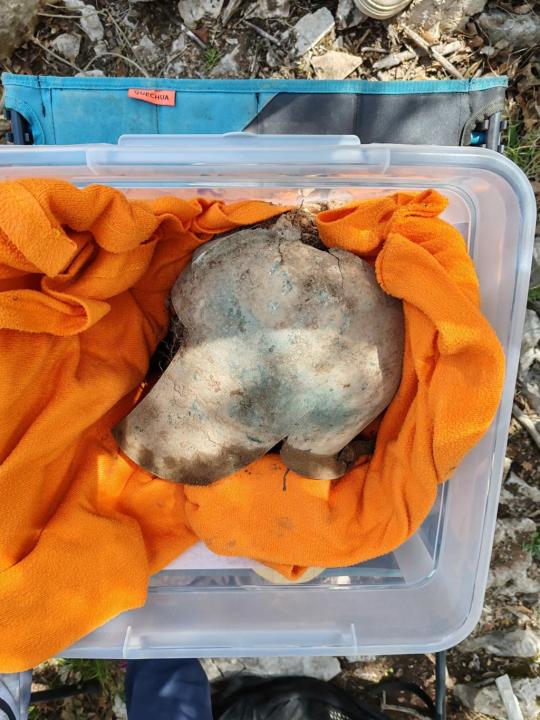

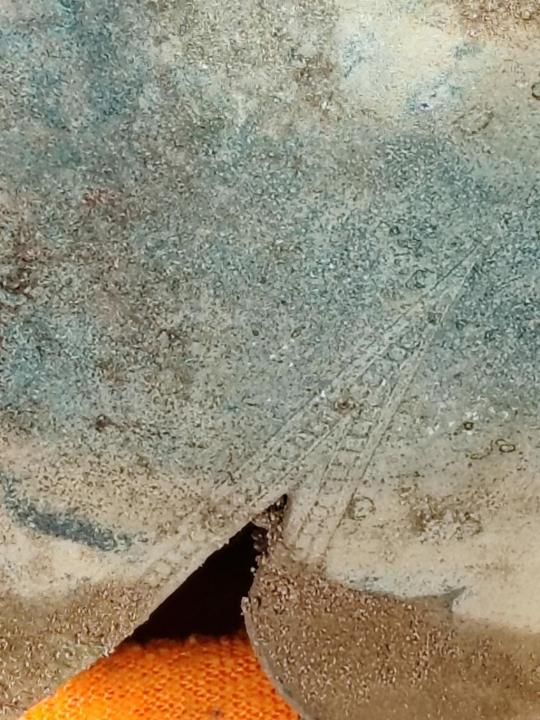
This find, along with a wealth of clothing, jewelry, and burial artifacts unearthed since the excavations began, greatly expands our knowledge of the funeral practices of Illyrian communities in the latter half of the first millennium BC.
The Illyrians were a group of Indo-European-speaking people who inhabited the western Balkan Peninsula in ancient times. They constituted one of the three main Paleo-Balkan populations, along with the Thracians and Greeks.
“What is very interesting is that two different types appear here in the same place, which speaks of a continuity of power of the respective community. These helmets have always been a symbol of some kind of status and power,” said Professor Hrvoje Potrebica, from the Department of Archeology of the Faculty of Philosophy in Zagreb.
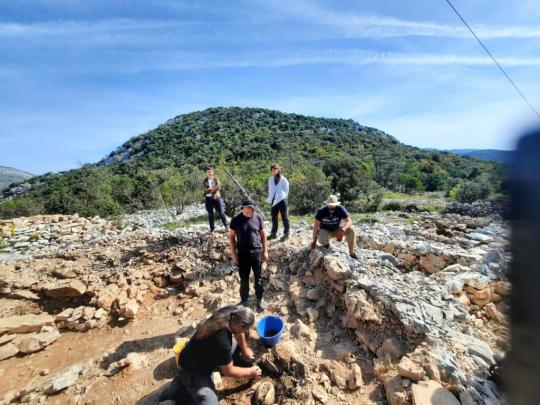
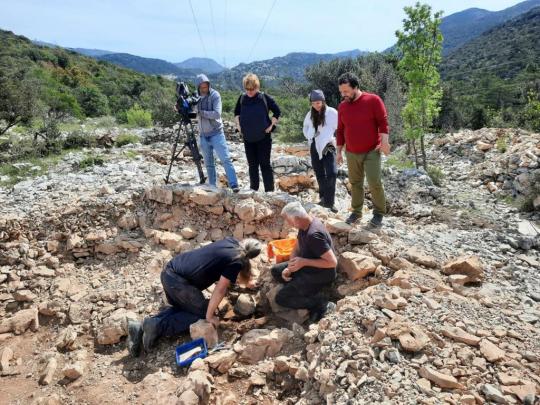
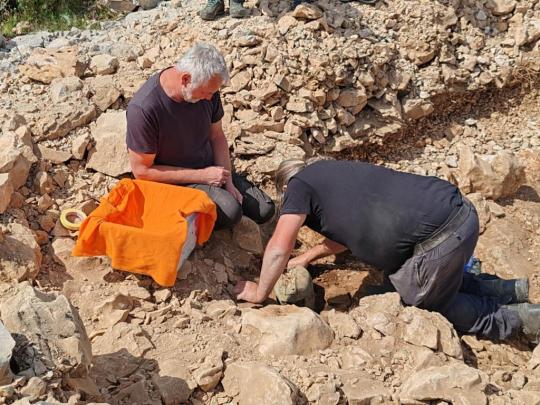
Speaking on the discovery, a representative from the Dubrovnik Museum said: “Along with numerous finds of jewelry, costumes and grave goods, this find of a helmet contributes in many ways to the knowledge of funeral rituals of Illyrian communities in the second half of the last millennium BC, and it ranks the area of Pelješac as one of the most important archaeological zones of the eastern Adriatic coast.”
Recently, archaeologists in Southern Italy have unearthed several significant artifacts, including two helmets, fragments of weapons and armor, and pottery shards, at an archaeological site in the ancient Greek city of Velia.
By Tasos Kokkinidis.
#2500-Year-Old Greek-Illyrian Helmet Discovered in Croatia#ancient Greek city of Velia#ancient artifacts#archeology#archeolgst#history#history news#ancient history#ancient culture#ancient civilizations#greek history#greek art
34 notes
·
View notes
Text

2 silver cups, part of the so-called Boscoreale treasure, buried by the eruption of Mt. Vesuvius.
#roman empire#ancient rome#pompeii#ancient history#ancient culture#ancient art#roman art#ancient roman art
4K notes
·
View notes
Text
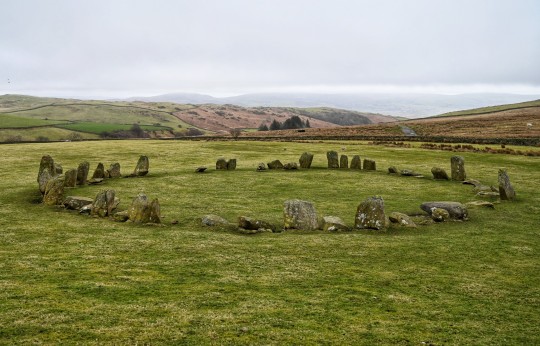

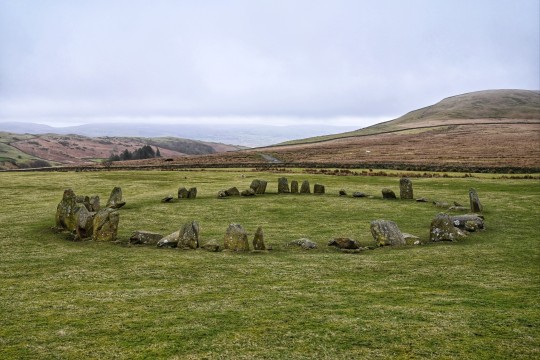
Swinside Neolithic Stone Circle, Sunkenkirk, South Lakes.
#ice age#stone age#bronze age#copper age#iron age#neolithic#mesolithic#calcholithic#paleolithic#prehistoric#prehistory#megalithic#megalith#stone circle#standing stones#archaeology#ancient living#ancient culture#ancient craft#landscape#wild places#nature#lake district#ancient sites#stones
4K notes
·
View notes
Text

Octopus vase from Palaikastro
c. 1500 BCE, painted stone
#ancient artifacts#ancient art#octopus#nature#wildlife#sea life#antiquities#ancient people#ancient culture#vessel#aesthetic#beauty#modern art#art history#aesthetictumblr#tumblraesthetic#tumblrpic#tumblrpictures#tumblr art#tumblrstyle#artists on tumblr
866 notes
·
View notes
Text
Chemistry Behind Ancient Pigment, 'Chinese Purple'

In ancient times, rare non-natural pigments, especially blues and purples. 'Chinese Purple' or 'Han Purple' a Barium Copper Silicate BaCuSi₂O₆ pigment, emerged from the Western Zhou to the Han Dynasty, found in terracotta army garments at the Qin Shi Huang Mausoleum. Initially linked to Egyptian Blue, Chinese Purple predates Silk Road contacts by centuries, suggesting an independent discovery.
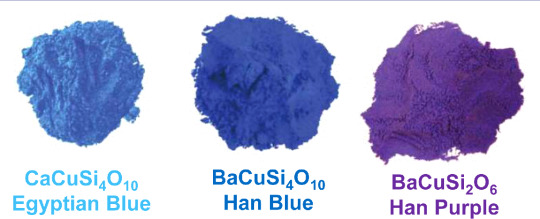
Likely an alchemical serendipity during Daoist experiments, its compounds—copper, barium, and lead—aligned with materials used by Daoist alchemists in creating ancient lead-barium glass.
#purple#ancient history#pigment#ancient china#chemistry#ancient culture#terracotta#silk road#interesting stuff#amazing facts#history
64 notes
·
View notes
Text
jokes on you bitches im ALWAYS thinking about the Roman Empire
#oh wait#I study it#aw shit#thinking about the roman empire#humor#shitpost#lol#pls help#jokes#funny#help me god#roman#roman empire#ancient history#ancient#roman history#ancient rome#ancient culture
89 notes
·
View notes